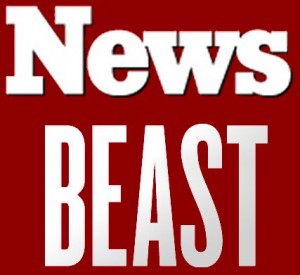 The rumored merger between Newsweek and The Daily Beast points up one of the big issues for merging companies: What to call the thing? Branding and mergers is often a matter of political bartering when cobbling together a deal. Letting lawyers make the brand name decision is not a good idea. The naming decision should be made with a careful weighing of the value of the legacy names, the strategy going forward, and the time and resources available for building the new brand. Here are the merger options:
The rumored merger between Newsweek and The Daily Beast points up one of the big issues for merging companies: What to call the thing? Branding and mergers is often a matter of political bartering when cobbling together a deal. Letting lawyers make the brand name decision is not a good idea. The naming decision should be made with a careful weighing of the value of the legacy names, the strategy going forward, and the time and resources available for building the new brand. Here are the merger options:
One Name Lives and the Other Name Dies
A recent example of this option in action is the merger of Continental and United. The new airline will keep the look of Continental, but will carry the brand United. The idea behind this approach is the strongest legacy brand with the best prospects for the future lives on. The downside is the equity of the dying brand is lost. This approach is relatively inexpensive. It is harder to tell the story that something new is happening.
Demote One Name
The strongest name with the best prospects for the future becomes the company name and the other name or names gets demoted to cover merely a product line. When Mars, Incorporated bought the Wm. Wrigley Jr. Company, it didn’t kill the iconic brand. Instead, the Wrigley name lives on as the name of the gum division. Demoting one brand saves companies from having to write off the brand equity of one brand. This merger name option works best if there is little overlap in product lines.
Glue Both Names Together
In an effort to appease both sides and perhaps keep the value of both brands, some companies choose to glue all the names together. It can create a mouthful, like PricewaterhouseCoopers International. You can keep just part of each name, as in the NewsBeast combination of The Daily Beast and Newsweek. This option is expensive, because everything needs to be rebranded. The company goes forward with a pieced together identity instead of a new, strong future image.
And Now for Something Totally Different
The riskiest and most expensive option is to adopt a new name altogether. You loose the equity of both legacy names. You have to spend time and money to build a new brand. But you do have the opportunity to create something new and better and shed some old baggage. The classic example is the merger of Bell Atlantic with GTE, which became Verizon. Not every merger with a new name is successful. PricewaterhouseCoopers International tried at one point to rename itself “Monday:”.
Whatever of the merger name options you choose, the criteria are the same. You want a distinctive name that carries your story into the future. With that in mind, here’s hoping that if Newsweek and The Daily Beast do merge, the name really will be NewsBeast.
More naming resources:
Naming How-To:
Naming Mistakes
Six Factors for a Memorable and Motivating Name
History of Best Known Brands
Styles and Types of Brands
Choosing a Name
Try a Recycled Name
Web 2.0 Naming Considerations
What is Brand Architecture
Approaches to Brand Architecture
Brand Architecture and Business Strategy
Companies and Products:
MSNBC vs. msnbc.com and The Bigger Naming Problem
Macy’s Blunder with Marshall Field’s Name Change
Banks and the Name Game from Bank Marketing Magazine
AIG Name Change to AIU
Breaking Up the Motorola Brand
Google’s Speedbook Disaster
Renaming a Small Business
Proxios CEO Talks About Renaming Process
Naming a Green Sportswear Company
Unintentionally Funny Names-BARF
Unintentionally Funny Names-Putzmeister
Unintentionally Funny Names-Bimbo
Renaming a $2 Billion IPG Agency
Renaming Iraqi Freedom
Selected Naming Portfolio
